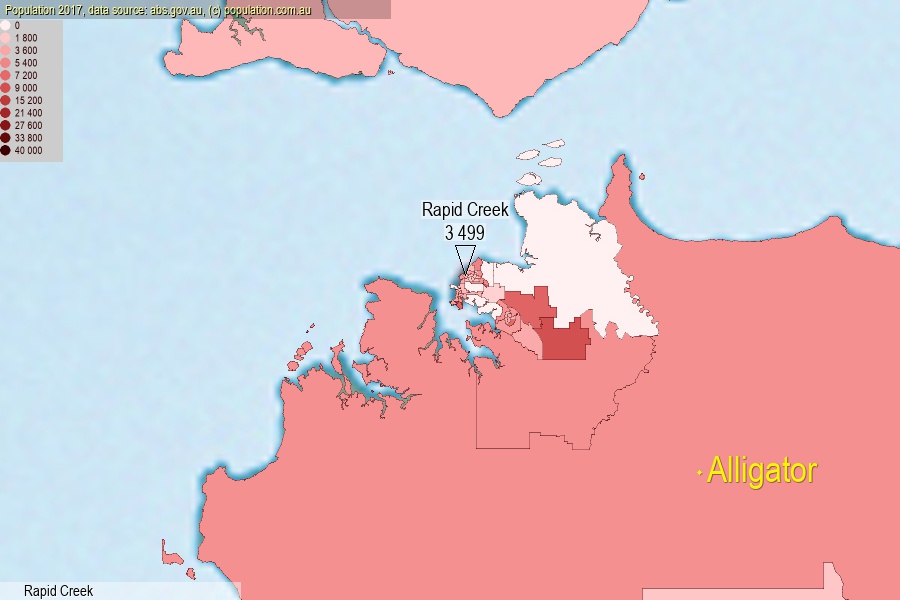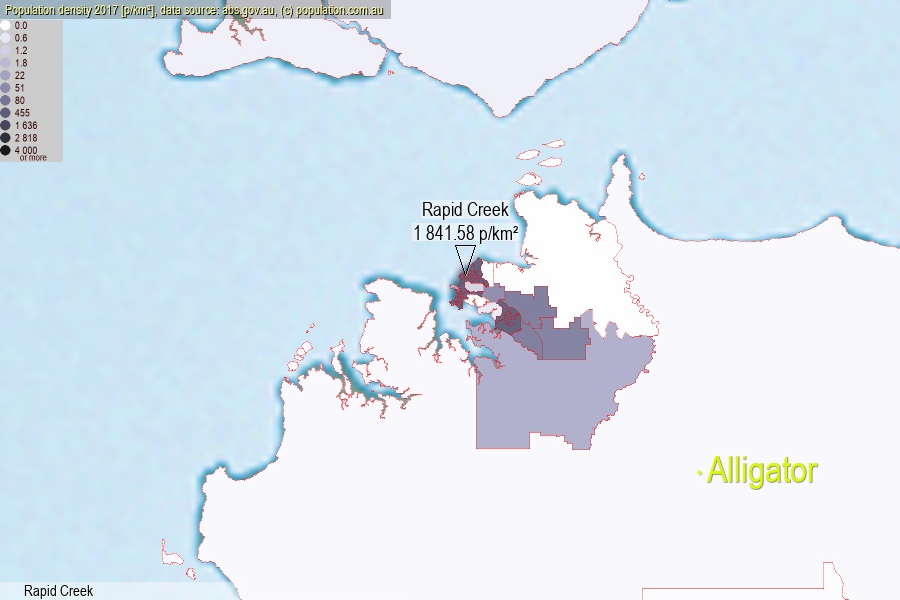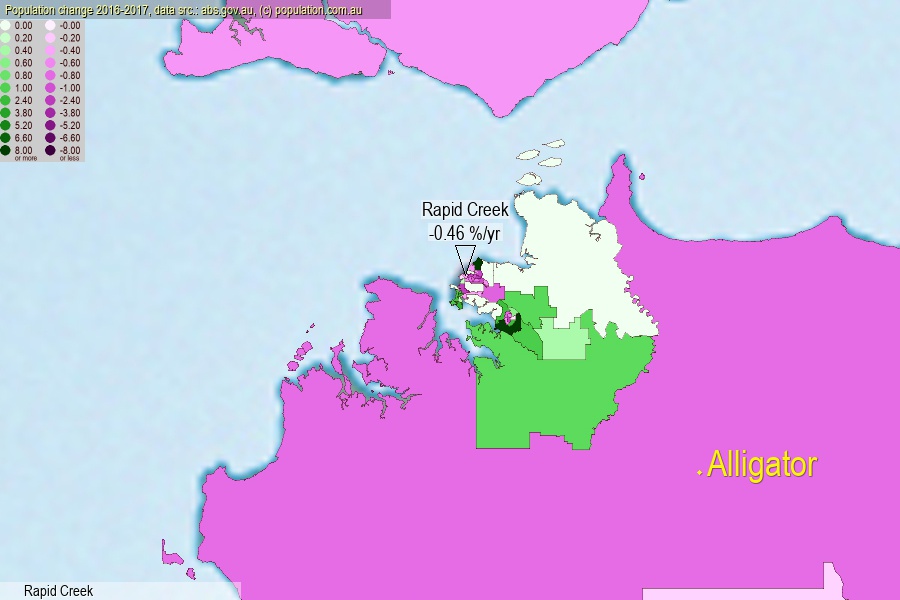 population.com.au
population.com.auLast official estimated population of Rapid Creek (as Statistical Area Level 2) was 3 499 people (on 2017-06-30)[2]. This was 0.01% of total Australian population and 1.418% of NT population. Area of Rapid Creek is 1.90 km², in this year population density was 1 841.58 p/km² . If population growth rate would be same as in period 2016-2017 (-0.46%/yr), Rapid Creek population in 2025 would be 3 374. [0]



Click to enlarge. Rapid Creek is located in the center of the images.
Population [people], population density [p./km²] and population change [%/year] [2]
View borders » (new window) [4]
[1991-1992] +0.71 %/Yr.
[1992-1993] +0.23 %/Yr.
[1993-1994] +0.67 %/Yr.
[1994-1995] +2.40 %/Yr.
[1995-1996] +1.14 %/Yr.
[1996-1997] +1.67 %/Yr.
[1997-1998] +0.06 %/Yr.
[1998-1999] -0.95 %/Yr.
[1999-2000] +0.61 %/Yr.
[2000-2001] +0.35 %/Yr.
[2001-2002] -0.85 %/Yr.
[2002-2003] -0.99 %/Yr.
[2003-2004] -0.51 %/Yr.
[2004-2005] +0.61 %/Yr.
[2005-2006] +1.03 %/Yr.
[2006-2007] +2.54 %/Yr.
[2007-2008] +3.32 %/Yr.
[2008-2009] +2.37 %/Yr.
[2009-2010] +1.52 %/Yr.
[2010-2011] +0.06 %/Yr.
[2011-2012] +2.05 %/Yr.
[2012-2013] +2.04 %/Yr.
[2013-2014] -0.86 %/Yr.
[2014-2015] -1.17 %/Yr.
[2015-2016] -0.54 %/Yr.
[2016-2017] -0.46 %/Yr.
[0] Calculated with linear interpolation from officially estimated population
[1] Read more about SA2 and Australian Statistical Geography Standard (ASGS) on abs.gov.au
[2] Population data from Australian Bureau of Statistics (Population and density: 2017; change: 2016-2017)
[3] Digital Boundaries: Australian Statistical Geography Standard (ASGS) 2016.
[4] Border coordinates are simplifyed using Ramer-Douglas-Peucker algorithm.